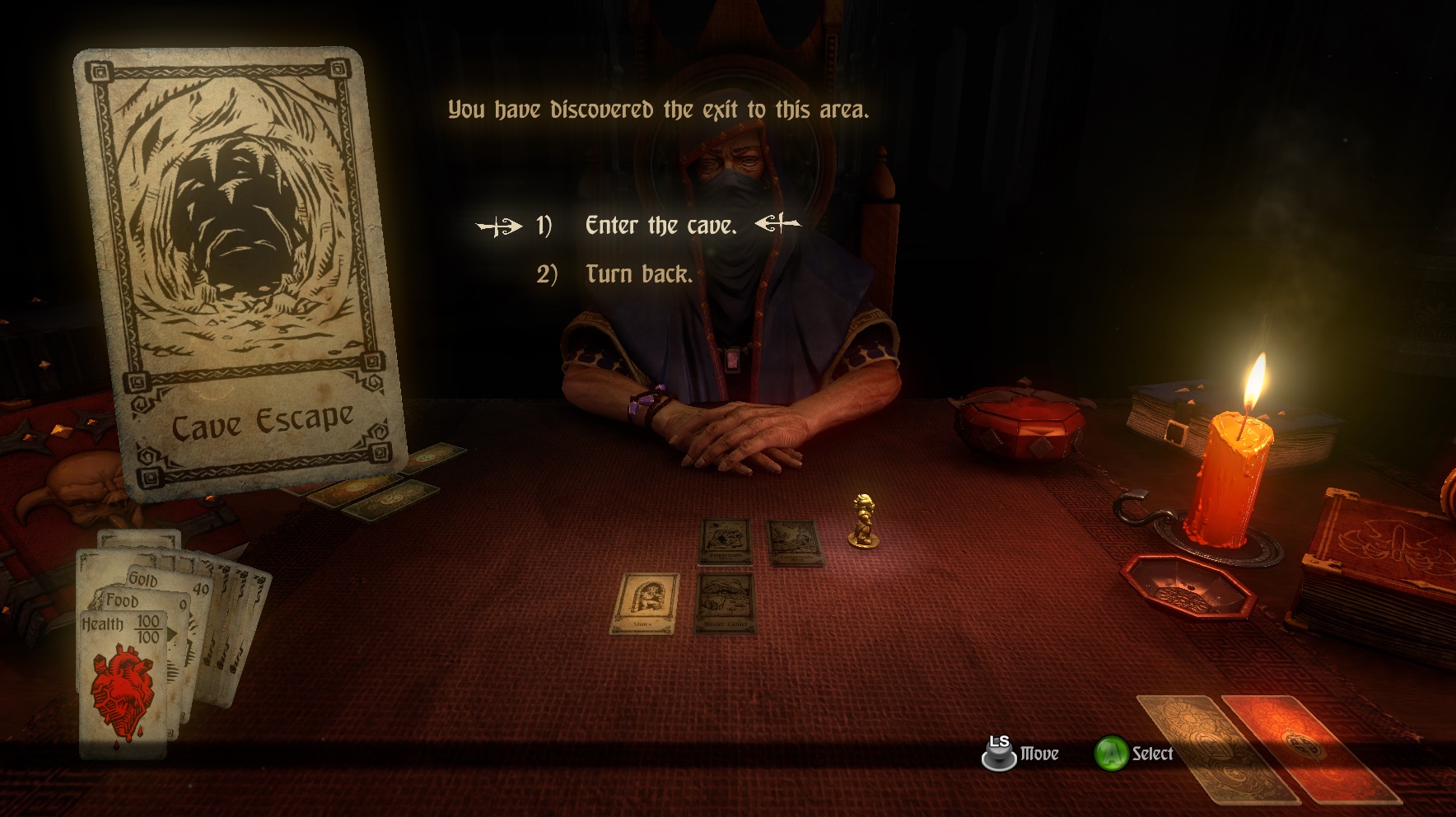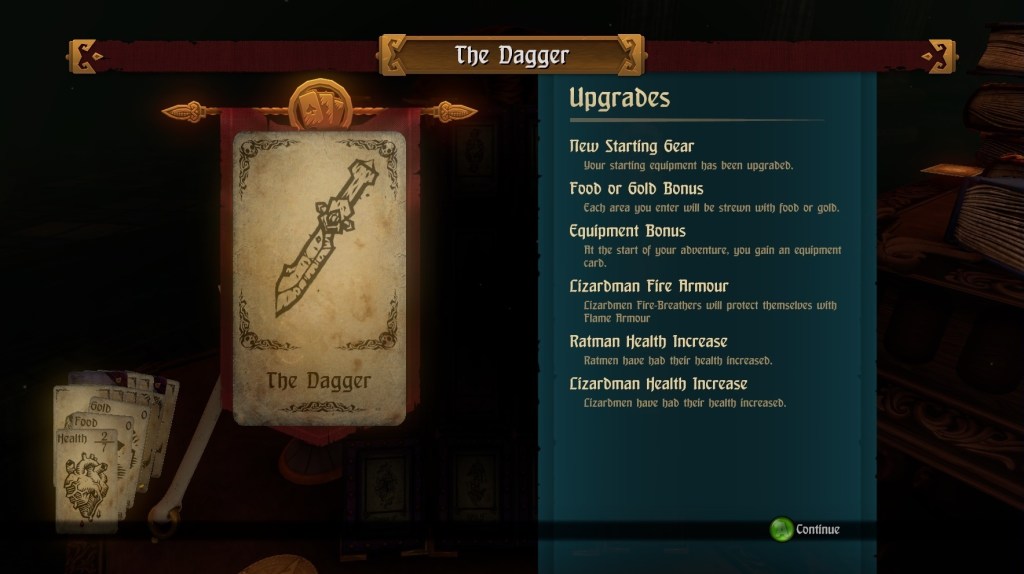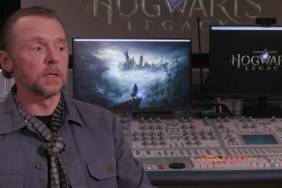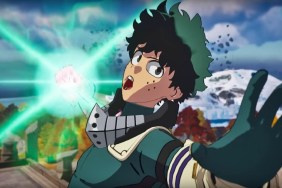Destined for greatness.
I normally refrain from writing this word because it's casually overused to the point of losing all meaning, but Hand of Fate is indelibly unique. No, not in the “everything is a special snowflake” sort of way. I mean in the way that I haven't seen anything like it and probably never will again. Hand of Fate flips the concept of a card-based game on its head and re-shuffles the traditional third-person action RPG with choose-your-own-adventure pathways and outside-the-box deck-building. Indeed, if Hand of Fate doesn't earn accolades for its design, we should just give up on innovation in gaming altogether.
Hand of Fate is not a card-based game in the typical sense like Magic: The Gathering or Hearthstone, as much as it is a game that represents all of the usual adventure elements, like health and gold, as cards. You won't be drawing a hand from a deck and playing creatures or instant spells to thwart an opponent; instead, you will collect weapon cards, flip over encounter cards, fight dust cards in the form of bandits in Fable-like third-person combat, and move through each space in a dungeon, one card at a time. But let's not get too far ahead of ourselves, as words can easily over-complicate an explanation of what is, at its core, an elegant game with numerous moving parts.
The general overview is that your character, a battle-hardened warrior who for a reason unbeknownst to you, has traveled far and wide to face The Dealer, a time-worn hooded figure who serves as both a dungeon master for this card game and as a narrator who encourages you, as much as he goads, prods, and doubts your every decision. Every match you have against this mysterious avatar of fate sees you moving through levels of a dungeon, where each space is represented by an encounter card, in an attempt to reach the end and defeat one of the twelve bosses in his cabinet. Clear The Dealer's cabinet of all his minions and you'll face the final challenge (which I'll leave unspoiled for you to discover).
Accomplishing this, of course, is far easier said than done. Not only will you need to assemble a deck of powerful equipment to draw from, as well as a reliable deck of encounter cards, but you must have sharp combat skills and take care that you have enough food, health, and gear to confront the final boss in the best shape possible. As mentioned before, every space on the board is in the form of an encounter card and finding the exit is usually the first order of business. Moving one space costs one food which heals five health points for your character; having no food, though, costs your character ten health per space, which makes starvation a severe problem that you'll want to prevent at all costs.
About half of the encounter cards is based on dialogue and mostly luck, where you must choose from among four shuffled cards labeled “Success” and “Failure” in what is essentially a shell game. I say “mostly luck” since it's possible on occasion to follow the cards and choose the outcome you want. As you progress through the game, this shuffle speeds up, but it's still possible to see the proverbial matrix, so to speak. Since this is still primarily luck-based, though, you can have a bad run and get hit with multiple Failures and Huge Failures from no fault of your own.
The other half of the encounter cards force you into battle against a certain number of enemies, starting off with bandits (represented as "dust") and skeletons ("skulls") in the first few matches, before moving onto ratmen ("plague"), lizardfolk ("scales"), mages, lava golems, and even minotaurs. Every fight is risky due to the lack of healing, but it's one of the only secure ways to earn food and treasure, so you'll need to pick your battles, quite literally.
Combat in Hand of Fate focuses on counters and damage mitigation, requiring you to reflect projectiles and avoid environmental traps as much as possible. Similar to the Batman Arkham series, attacks that can be countered have a handy indicator that appears above enemies (or above your character if it's a long-range attack), and learning how tough foes like mages and lava golems usually attack on the battlefield can make all the difference. Indeed, the journey to reach the chosen boss is a marathon, not a sprint, so keeping your health high and not wasting gold on health recovery items are key. Spending gold instead at shops on a strong elemental weapon with an explosive ability, an artefact with healing powers or an area-of-effect ice blast, heavy armor for protection, and an assortment of rings, helmets, and blessings will ensure that you'll be ready for the last battle.
While the fighting system has improved dramatically since Hand of Fate's first build in Early Access, the camera still has the problem of zooming in too close or having an awkward angle. This becomes a more serious problem in the endgame when you'll often be surrounded by more than ten enemies (or facing two, maybe three, prior bosses at once!) and placed in an environment full of traps that can be triggered with a nonchalant roll into the foreground. Sometimes you don't have a choice but to be damaged—especially during the final boss of the game—when you're caught in between animations for dodge-rolling, countering, and ability activation. Although the majority of damage you take in combat will be your fault, the rest could have been avoided with a controllable camera and fewer frame traps.
Once you conquer the second row of bosses, The Dealer doesn't pull any punches, going far beyond the trope of throwing tougher enemies at you. While completing each row of bosses will progressively upgrade your character's starting gear, nearly every basic enemy will obtain a stat boost in turn. Encounter cards themselves will become harder too, increasing the number of shuffles and the amount of Failure cards. Passive penalties in the form of curse cards will become more frequent, slowing your ability cooldowns, taking gold after every battle, slicing your max health, or pilfering food just for using a counter-attack. If that weren't enough, dungeons become longer, enemies learn new attacks, and any rewards you earn will be lowered. This all might seem like an insurmountable challenge, but it's definitely possible and well worth the effort, like when I defeated one of the bosses with just seven max health points out of the starting 100 (pictured above).
Luckily, whether you succeed or fail a match, Hand of Fate is a game that keeps on giving. Beating bosses and clearing encounter cards with the best possible outcome will award you tokens that unlock better equipment and more encounter cards… that will likely lead to even more cards. Replaying a match with an easier boss is worth the time just to attempt completing high-risk, high-reward cards that you would normally avoid. Discovering what an item does and the many ways an encounter card can end is a part of the gratification. Delving into the unlockable Endless Mode is a welcome challenge too as a test of how far you can descend before your inevitable demise.
Hand of Fate is an extraordinary example of the best that indie development, Kickstarter, and Steam Early Access have to offer. Though the combat and the camera could have been given a touch more polish, the ingenuity of the card-based game design speaks loud and clear. From the graphical detail of each piece of equipment, to the dialogue of The Dealer which rarely repeats itself, Hand of Fate pays attention to every last nook and cranny, carving out a niche all its own and bringing Defiant Development into the much-deserved spotlight. This is one conceptual experiment that thoroughly works and anyone who clamors for innovation in gaming needs to sit down at the table and play a hand.
Code provided by publisher. Review based on PC version. Also available for Mac, PS4, Vita, and Xbox One.
-
Ingenious hybrid of genres
-
Customizable deck-building for encounters and equipment
-
Strong voice-acting and dialogue for The Dealer
-
Challenging combat and environments
-
...but some tight camera angles
-
...and the occasional frame trap
-
Rule-bending twists and solid difficulty curve
-
High replay value, wonderful sense of discovery
-
Endless mode
Hand of Fate Review
-
Hand of Fate Review #1

-
Hand of Fate Review #2
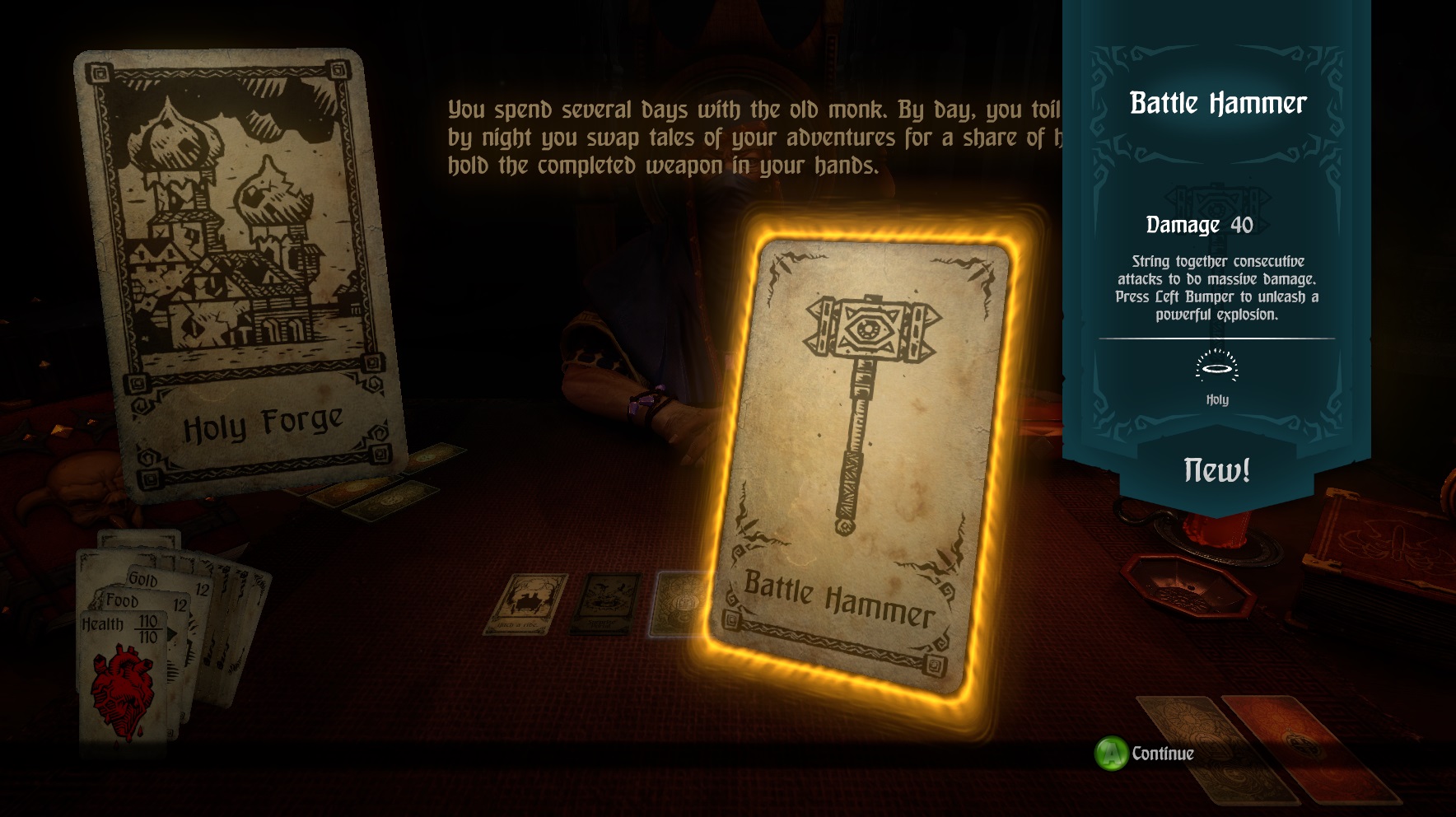
-
Hand of Fate Review #3
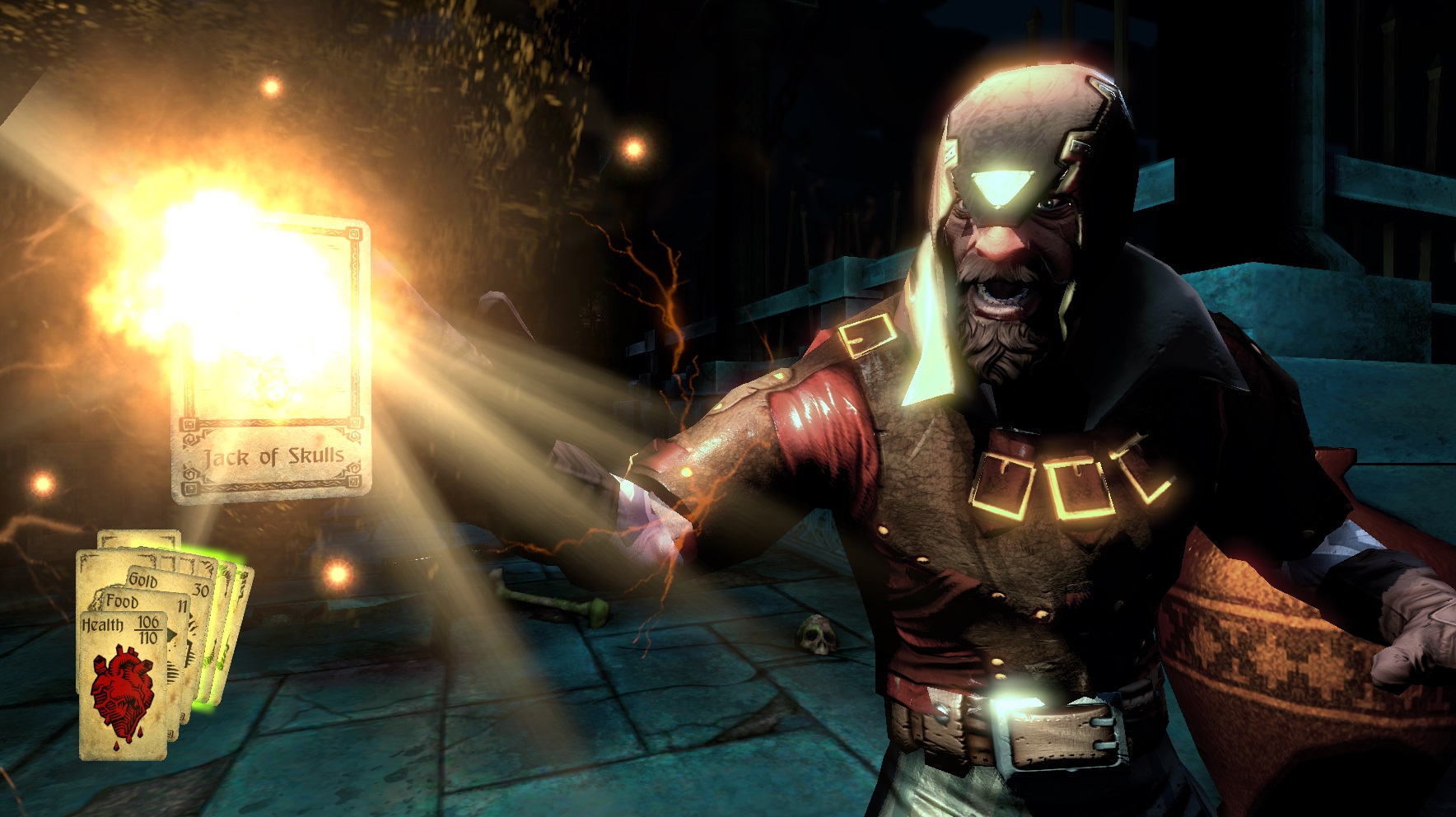
-
Hand of Fate Review #4
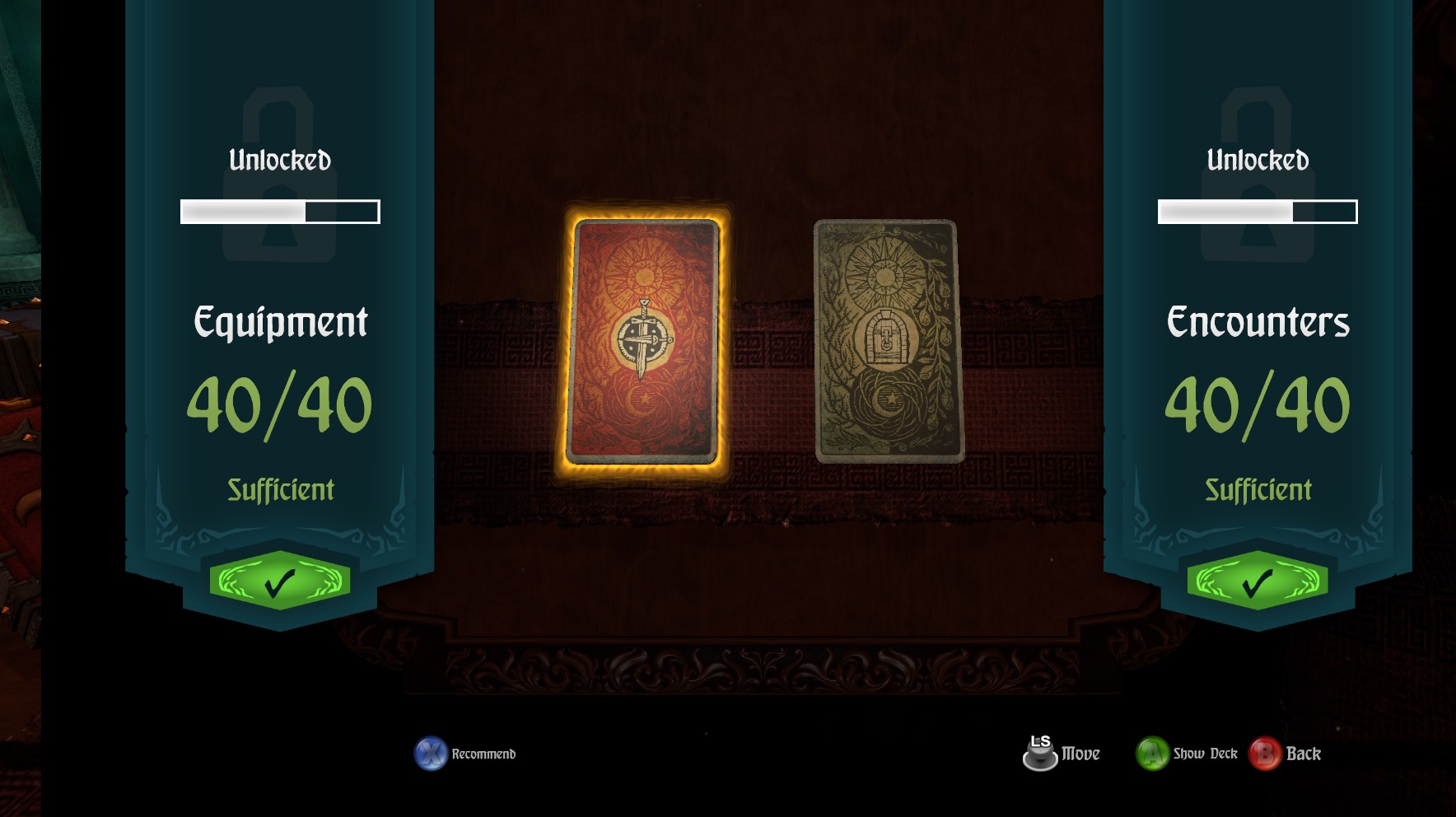
-
Hand of Fate Review #5
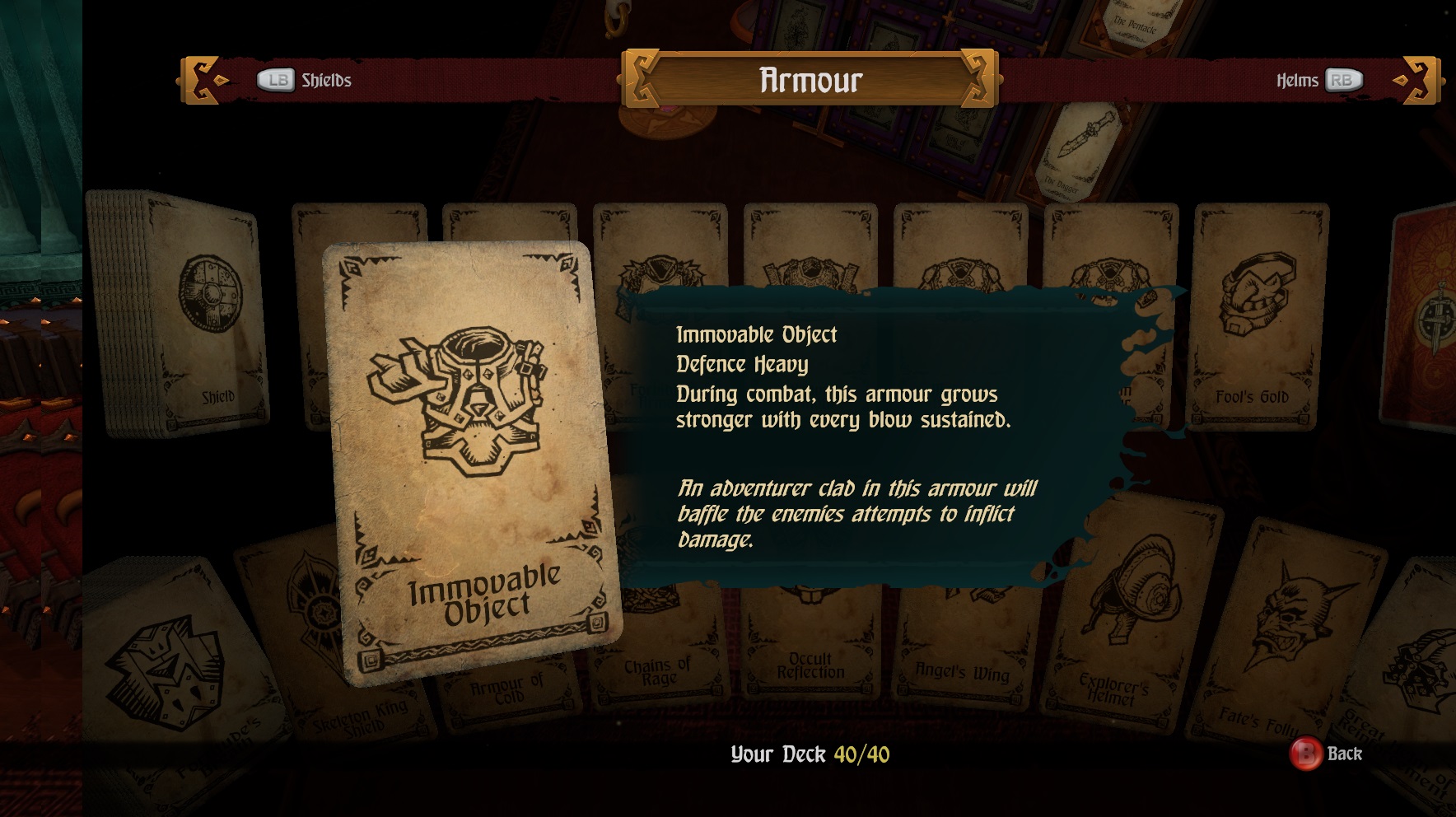
-
Hand of Fate Review #6
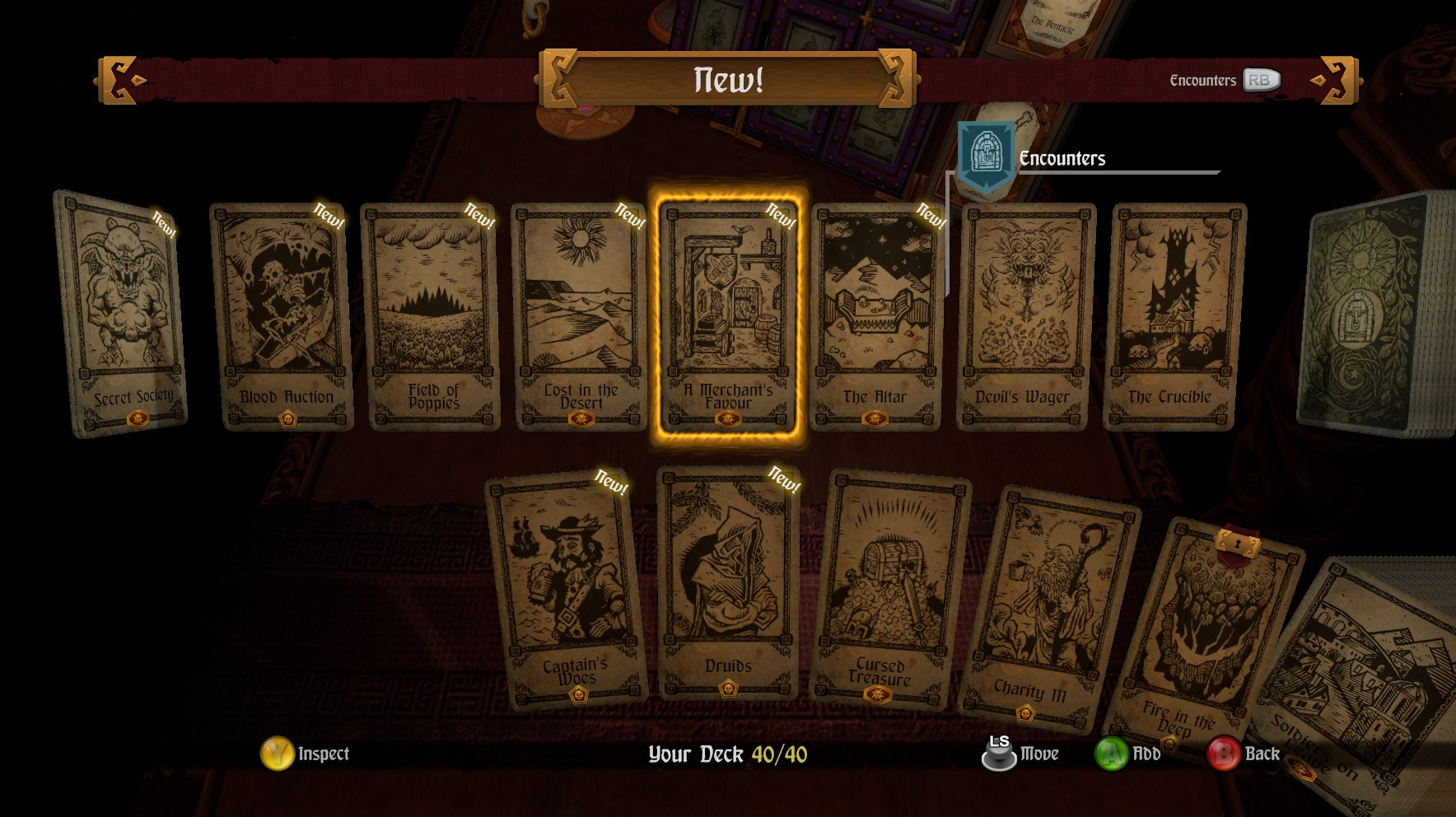
-
Hand of Fate Review #7

-
Hand of Fate Review #8
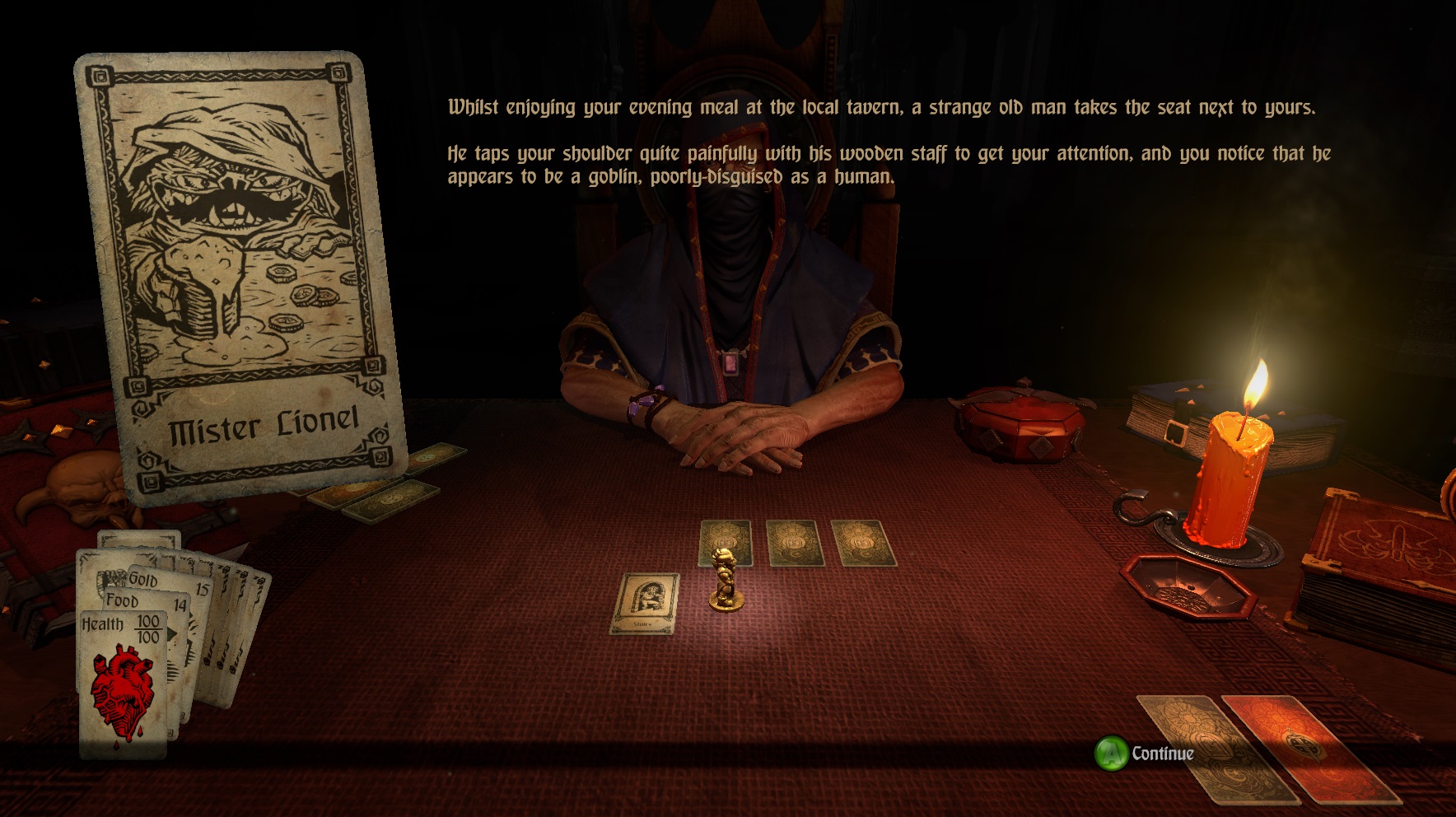
-
Hand of Fate Review #9
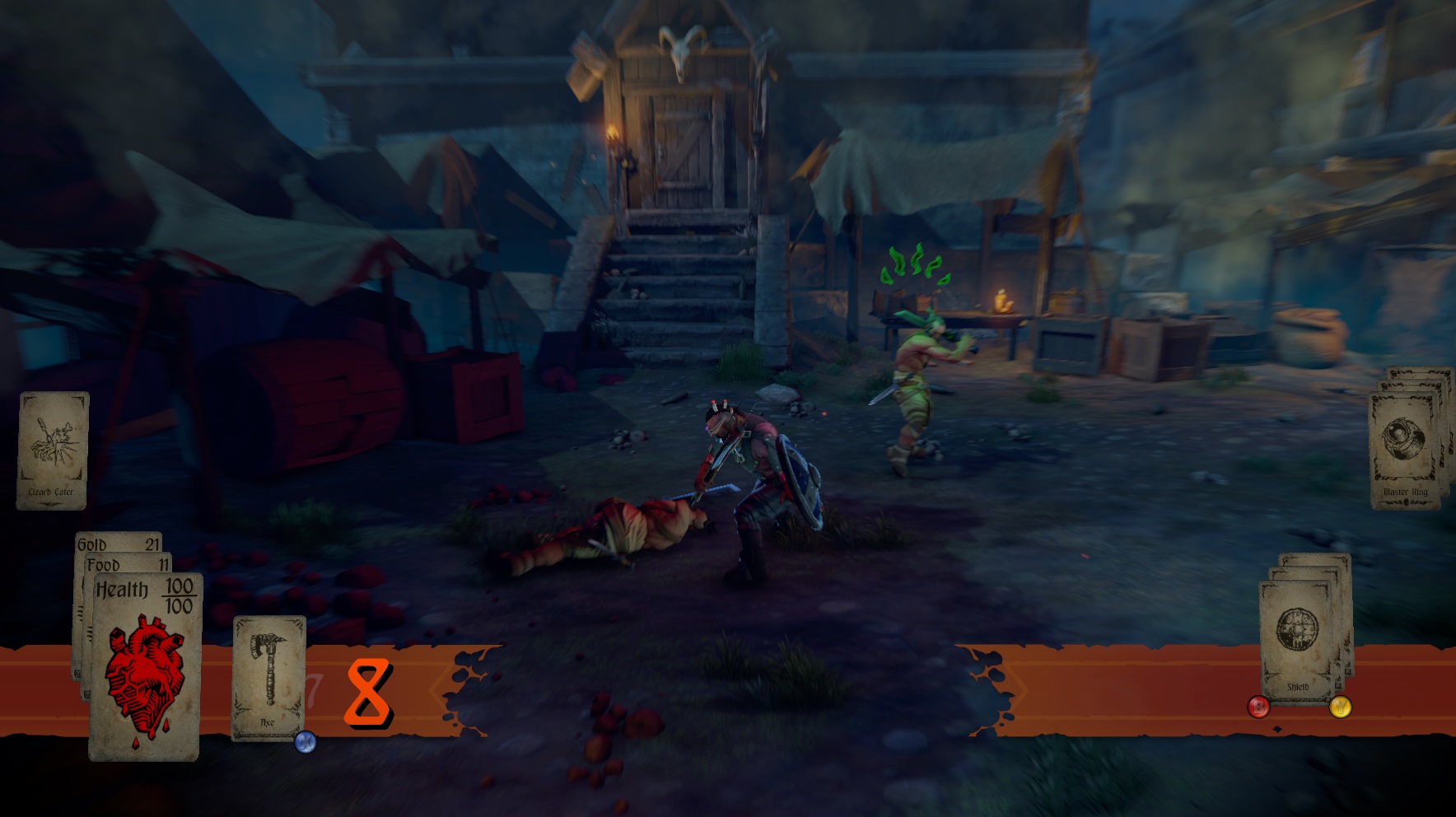
-
Hand of Fate Review #10
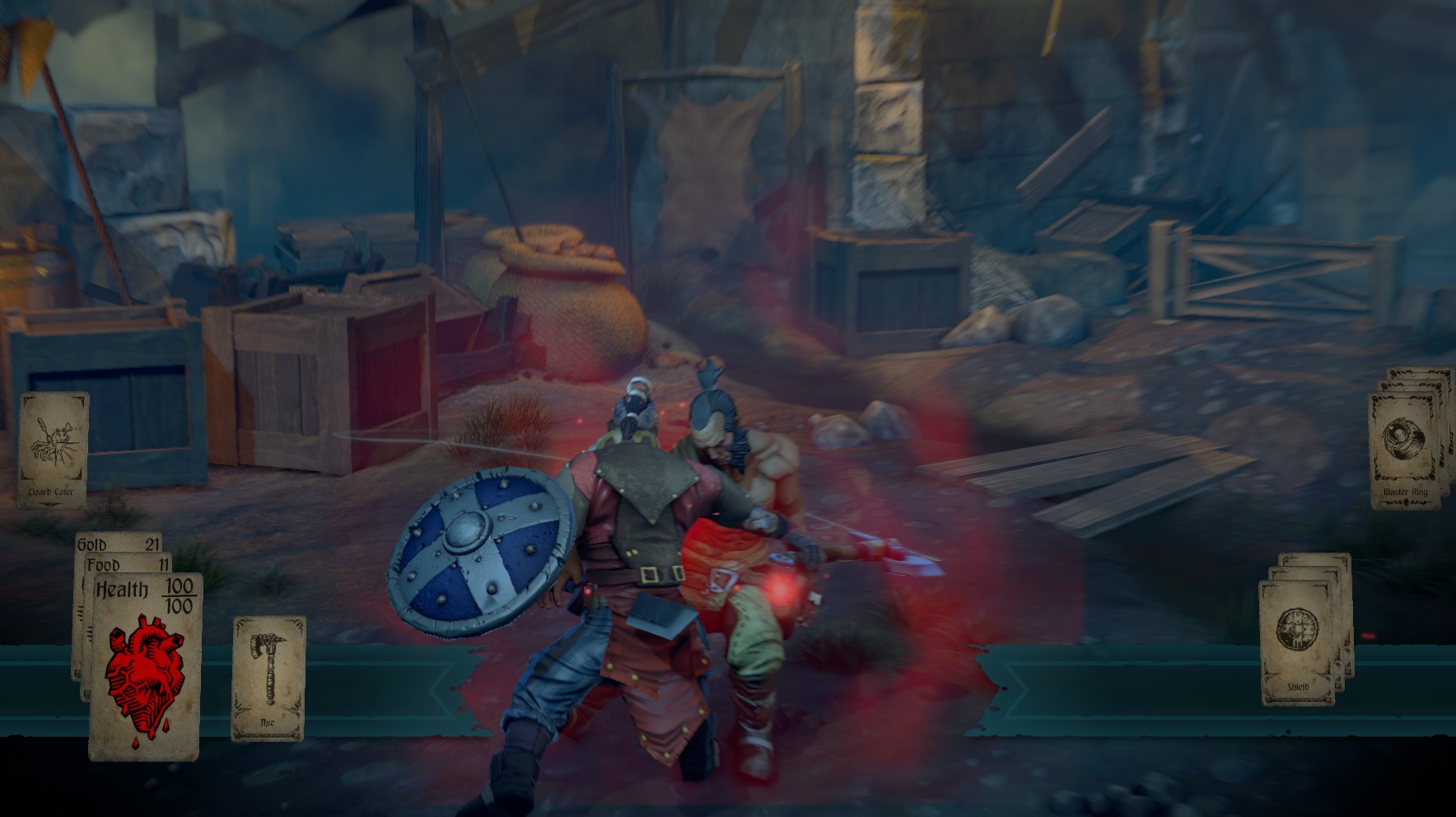
-
Hand of Fate Review #11
